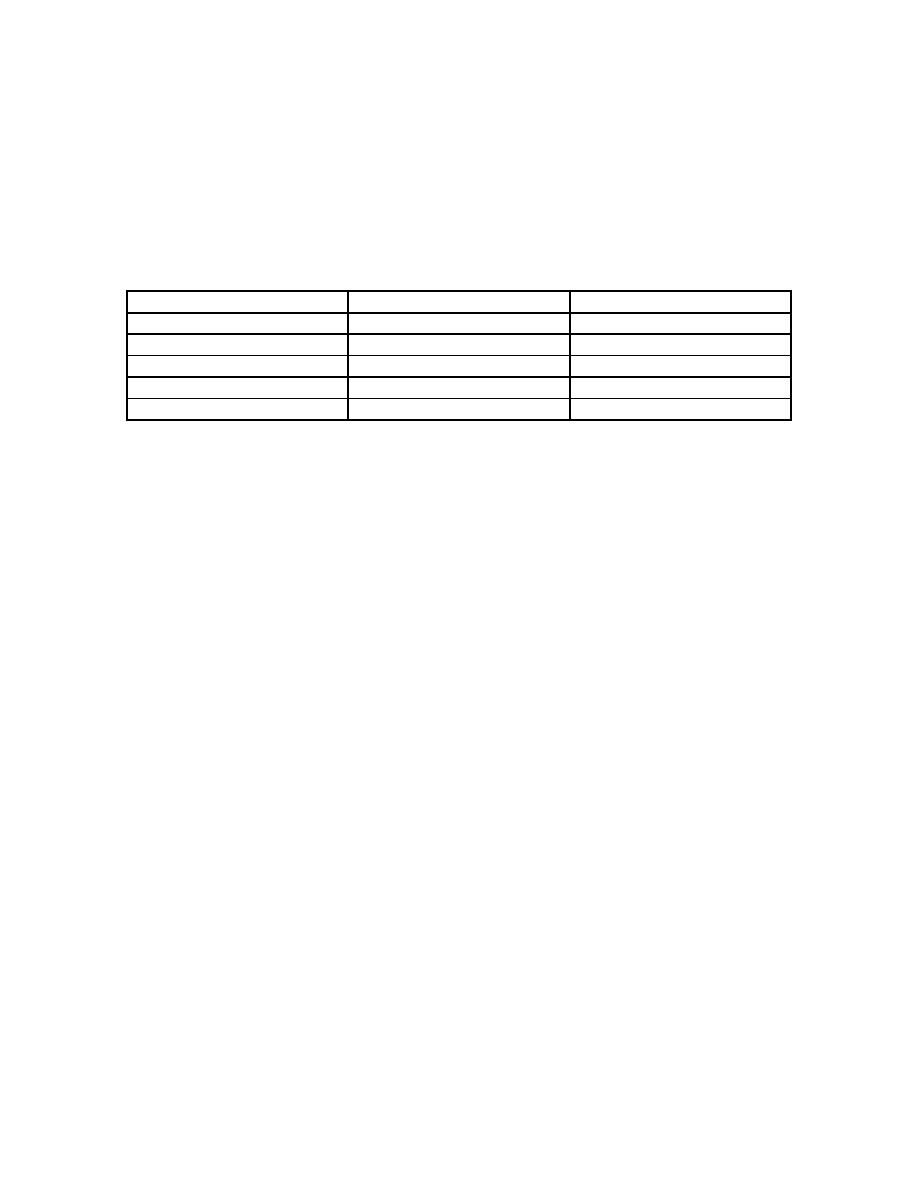
calculated for overcast optically thick clouds at altitudes from 1 km to 10 km for each of
the Geophysics Laboratory model atmospheres. An example of the resulting calculations
is given in Figure 3.1.
The results for all Geophysics Laboratory model atmospheres and the correlation
coefficients are given in Table 3.1.1.
Table 3.1.1 Calculated regressions for determining the cloud irradiance for the Geophysics
Laboratory Model Atmospheres.
Atmosphere
Cloud Irradiance
Correlation coefficient
Tropical
95-5.8Z
0.996
Mid-latitude Summer
96-5.8Z
0.997
Mid-latitude Winter
93-5.8Z
0.997
Subarctic Summer
95-5.9Z
0.998
Subarctic Winter
90-5.8Z
0.991
3.2 Downwelling Infrared Flux Model Validation
The Smart Weapons Operability Enhancement (SWOE) field program data were used to
evaluate the downwelling infrared flux model. The SWOE field programs were
conducted during the fall of 1992 (Grayling I-Grayling, MI), the winter/spring of 1994
(Grayling II-Grayling, MI), and the spring/summer of 1993 (Yuma, AZ). Each program
ran for approximately 44 days and meteorological information was collected at several
locations in a 2-km-square area with a temporal frequency of one minute. Hourly average
values of the meteorological information were used to evaluate the downwelling infrared
model. The hourly average values were computed using the one-minute values for a
period of 30 minutes before and after the hour. The exception was the cloud amount
information. During Grayling I, observations of the cloud cover were made on the hour
from approximately 0700 to 1900 local. During the night, the cloud amounts were
derived from ceilometer measurements. The hourly fractional cloud amount was
computed from the number of one-minute ceilometer measurements that indicated
clouds. The sixty observations were centered on the hour. Unfortunately, the ceilometer
used to compute the nighttime cloud amounts was an older model that had an effective
range of only several kilometers. It is highly unlikely that middle and high clouds ever
entered into the calculation of the cloud amount. Figure 3.2 is a plot of the measured and
computed downwelling longwave flux as a function of the fractional day of the year.
18



 Previous Page
Previous Page
